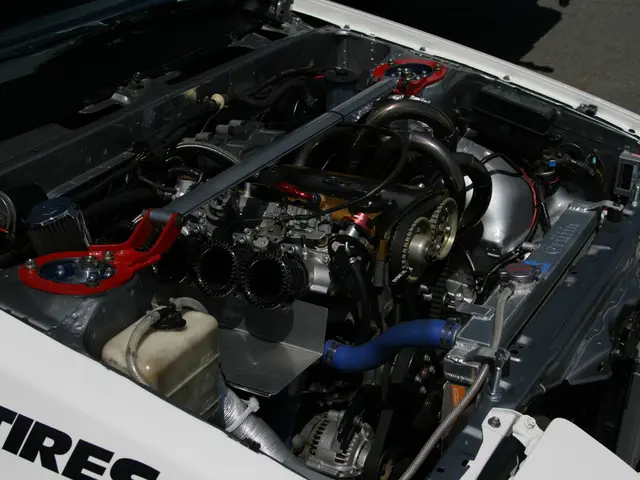Pioneering advancement in technology, spanning from Silicon Valley to Motor City.
In the realm of groundbreaking product designs, none may surpass the impacts made by Doug Field. His footprints are visible in the MacBook Air, Segway, and Tesla Model 3, just to name a few. But his most audacious challenge yet looms ahead—transforming the Ford automobile, a symbol of the past century's technology, into a shining beacon of the digital and electric future.
As Ford's electric vehicle, digital, and design guru, Field faces a monumental task—leveraging his decades of experience to turn the traditional automaker into a fast-moving startup. "It's a bloody battleship trying to turn around," Field concedes, acknowledging the challenges of fostering innovation within a legacy company.
Field's passion for creativity and execution was born from an early fascination with automobiles. With a family of artists and engineers, he was drawn to the marriage of aesthetics and technology that cars represented. After earning a degree in mechanical engineering, he kick-started his career at Ford but soon found himself stifled by the company's overstructured culture. Frustrating as it was, this experience challenged him to seek out fast-moving, technology-driven businesses where his innovative spirit could thrive.
In 1993, Field ventured into process development at Johnson and Johnson Medical before joining Segway, where he finally had the opportunity to build his dream team. Segway's focus on personal mobility devices pushed the envelope in technology, process, and design, setting the stage for Field's future endeavors.
In 2008, Field joined Apple and swiftly ascended the ranks to Vice President of hardware development for all Mac computers. His leadership banked on a unique ability to "zoom out and zoom in," striking a balance between the big-picture ethos of the product and the minute details that bring it to life. This approach, rooted in Field's MIT education and refined at Segway, went on to shape his work at Tesla.
At Tesla, Field's team revolutionized the electric vehicle industry by integrating digital technology in a way nobody else dared. This experimental spirit is now key to Field's work at Ford. He's assembled a "skunk works" team to develop a new, software-enabled EV platform, paving the way for the production of future sedans, SUVs, and even small pickups.
Ford's journey towards electrification and digital transformation comes at a critical juncture. With rivals like Volvo, Tesla, and Rivian nipping at its heels, success hinges on Field's ability to marry the manufacturing might of Ford with the bold approach honed through a series of audacious innovations. If Field succeeds, he may just catapult Ford to the forefront of the electric vehicle revolution, cementing its legacy for generations to come.
As Field leans into this latest chapter, he sees the potential for something extraordinary, "This is a big deal, for Ford and the U.S. auto industry, and, actually, for American industry as a whole." Field's lifelong passion for design, his knack for fostering innovation, and his unwavering dedication to perfection have established him as a pioneer in the realm of product design and manufacturing. With roots in the past and eyes fixed on the future, Field's influence promises to redefine the automobile's place in our world, one groundbreaking project at a time.
[Enrichment Data]- Digital Transformation: Field's work has led Ford to focus on building upon the digital experience launched in models like the Ford Explorer and deploying it across the portfolio to make future products more affordable and maintain compatibility with older vehicle architectures.- Electrification Strategy: Field emphasizes the importance of integrating design, manufacturing, and software development, using best practices and first-principles thinking to create a cohesive platform that can support multiple vehicle variants over time, inspired by companies like Waymo and new-age electrification startups.- Adaptation to Market Changes: Field's guidance has helped Ford adapt to slower-than-expected electric vehicle adoption, shifting the focus towards a more inclusive strategy that caters to customers who prefer gasoline, hybrid, or electric vehicles, ensuring that the digital transformation does not leave behind any customer segments.- Operational Efficiency: Under Field's leadership, Ford has streamlined operations, including cutting 350 connected-vehicle software jobs, reflecting a broader strategy to focus on core competencies and streamline operations to support the transition to electric and digital technologies.
- Doug Field's role at Ford requires him to apply his decades of experience to convert the traditional automaker into a nimble startup, much like a startup in the technology or space industry.
- As the electric vehicle, digital, and design expert for Ford, Field seeks to clean up the manufacturing processes and integrate technology at par with startups in the technology and environmental sectors.
- Field's mission at Ford, reminiscent of a science or innovation endeavor, is to lead the transformation of the Ford automobile into a symbol of the digital and electric future.
- In the realm of product design and manufacturing, Field has proven his ability to foster innovation, much like leaders in the healthcare, education, and finance industries would nurture innovation in their respective fields.
- The Ford journey of electrification and digital transformation is crucial, just like the learning and development process in education or the adaptation in businesses and lifestyle sectors.
- Field's work, akin to the advancements in the automotive or engineering industries, revolves around the design, manufacturing, and software development of electric vehicles.
- Ford's digital transformation, similar to the revolution in the transportation sector brought about by the advent of electric vehicles, aims to maintain compatibility with older vehicle architectures and cater to customers who prefer gasoline, hybrid, or electric vehicles.
- Field's leadership style, much like a guru or role model in any industry, strikes a balance between the big-picture ethos of the product and the minute details that bring it to life, much like the mental focus required in science or exploration.
- Ford's electrification strategy, like the strategic planning in any industry, includes building upon the digital experience already present in models like the Ford Explorer and integrating design, manufacturing, and software development to create a cohesive platform for multiple vehicle variants over time.
- Field's guidance, much like the leadership of a successful entrepreneur or industry leader, has helped Ford adapt to slower-than-expected electric vehicle adoption, shifting the focus towards a more inclusive strategy that caters to all customer segments to avoid leaving any behind in the digital transformation.
- Under Field's leadership, Ford is streamlining operations, reflecting a broader strategy to focus on core competencies and streamline operations, much like a company in the automotive or business sector would when transitioning to new technologies.







